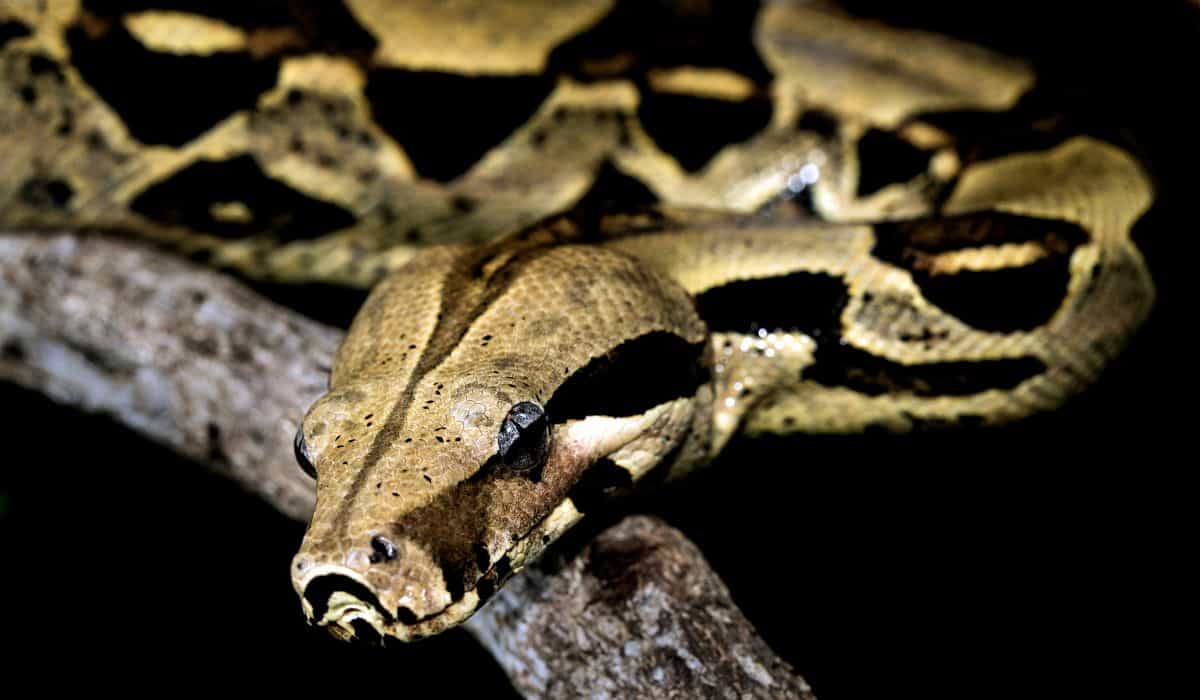
Social media, and the internet as a whole, often spread false and hasty information about snakes. But what is really true or false about these animals?
+ This video of cats and ducks is the cutest thing you’ll see today.
The website The News & Observer gathered experts like Dr. Ben German and biologist Falyn Owens to clarify 15 common myths about snakes, especially venomous ones. Here they are:
1st myth: Snake repellents, such as essential oils and/or mothballs, ensure that snakes stay away
False. These types of methods and products do not work to repel snakes. The best way to reduce the presence of these animals is to keep the grass cut, with trees and shrubs trimmed above ground. Remove piles of wood or stones that provide hiding places for snakes and their prey. Remove food sources that attract rodents, such as bird feeders or pet food.
2nd myth: Construction and development projects push snakes into nearby neighborhoods
False. Construction can displace snakes on a small scale, but they usually return to their “old” area when projects are completed. Some snakes also try to shelter and stay safe during construction, but industrial equipment kills many that remain nearby.
3rd myth: Bites from young copperheads (a type of snake) are more dangerous than bites from adult copperheads
False. The popular belief is that the young cannot control their venom, so you would be poisoned on a larger scale, but that is not true. Young snakes can definitely inject venom with their bites, but they are not more dangerous than adults.
4th myth: Snakebites usually require antibiotics
Not always true. Emergency rooms see dog and cat bites much more frequently than snakebites, and snakebites often only require wound care. Dog and cat bites, for example, often become severely infected and require heavy antibiotics.
5th myth: Snakes are likely underground around your property
False. Snakes want foliage, piles of logs, and other dense and hidden spots above ground to camouflage and have some cover.
6th myth: Copperheads want to bite you
False. Copperheads and other snakes do not want to be near you, and often flee the other way when they see a human. The most common ways to be bitten by a snake are by trying to handle or even kill it, and sticking your hand or foot in an area where it is hidden or concealed, in those situations the snake may feel trapped and threatened. Therefore, it is important to always look where you are putting your hands and feet, wear closed shoes when outdoors, and thick gloves for extra protection when doing yard work or gardening.
7th myth: Snakes can still bite you even after they are dead
True. Although it is widely accepted that you should not kill snakes in the first place, it is actually possible for snakes to bite after they have been decapitated and ‘dead’. This occurs because these reptiles are capable of moving their heads, even separated from the body, and quickly give a bite to the hand.
8th myth: If you see one snake, others are nearby
True, to an extent. You may see two or three in one location, but that’s likely because it has great shelter and food sources around. But overall, snakes tend to be solitary.
9th myth: If there is a copperhead on your property, you may have a nest
False. Copperheads do not “nest” or “hive”. In the warm months, when it is not uncommon to see a copperhead, snakes live alone to mate and find food.
10th myth: Venomous snakes are the only snakes with teeth/fangs
False. All snakes have some type of teeth to hold and eat their prey.
11th myth: If a snake has elongated (long/slit) pupils, it is venomous
Not always. Popularly it is said that venomous snakes have elongated pupils that look like a slit in the center of the eye, while non-venomous snakes have a round pupil. However, snake pupils can dilate, just like a human’s, and appear round. Furthermore, there are venomous snakes, like coral snakes, that have round pupils, while non-venomous snakes, like boas and pythons, have slit pupils. Therefore, because of this randomness, the shape of the pupil should not be taken into account to determine if a snake is venomous or not.
12th myth: If a snake has a triangular-shaped head, it is venomous
False. A wide or triangular-shaped head does not mean that a snake is venomous. Several non-venomous snakes can mimic the triangular shape of venomous snakes. They do this by flattening their heads when threatened to avoid becoming prey to another animal.
13th myth: Rattlesnakes are the only snakes that shake their tails and “rattle”
False. Racersnakes also shake their tails and make sounds. Yes, rattlesnakes rattle, but other non-venomous snakes can make sounds that, to the untrained ear, may sound like a rattle and scare someone into thinking a rattlesn
This content was created with the help of AI.

